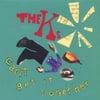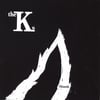 | |
| Peter van der Donck |
Some books are so good they
can make you tedious. Russell Shorto’s The
Island at the Center of the World: The Epic Story of Dutch Manhattan and the
Forgotten Colony That Shaped America has made me into a bore. I’ll drone on
about why we say “cookies” instead of “biscuits” and why Yonkers is called
Yonkers. This book is chock-full of historical tidbits and trivia about the
formative period of New England, which help its thesis go down. Shorto believes
the democratic, inclusive spirit of the United States was born not with a bunch
of theocratic Pilgrims, but with the Dutch colonists of New Amsterdam.
The heart of this book,
which lends credence and drama to that thesis, is the story of a legal battle,
and a battle for control of the new colony, between two key figures. The
idealistic Adriaen van der Donck wants more representation for the colony
representatives, and the colony director Peter Stuyvesant wants to maintain his
own central power, and have van der Donck put in shackles for treason. The conflict
comes to a head back in the not-so-old country, the Netherlands—itself a rather
modern construct in a time when feudal history determined most geography—in what
was becoming a formative period of democratic nascence. The result of this
legalistic and political wrangling almost birthed a more representative
government in the New World—until yet another war broke out
and ruined everything. Soon the English took over the colony and made it New
York. Still, Shorto maintains, the key ingredients for a more inclusive and
cosmopolitan United States had been baked into the mix.
Does Shorto repeat his
theory about the spirit of tolerance a few too many times? Does the book
occasionally get bogged down in too many historical details in some spots, and
then get fuzzy in others? Do we hear about the guy who’s transcribing a mother
lode of old Dutch documents too many times? Does my rhetorically asking these
questions negate the need for an answer?
Still, the writing is for
the most part fluid and clear, making connections between seemingly disparate
historical facts and building suspense. Also, there are those glorious tidbits,
such as the cruel fate of Henry Hudson and the origin of coleslaw. To be clear,
those are two different stories; Henry Hudson was not torn apart in a cabbage
shredding machine.
There’s a popular TV show
called Gotham, which lays out the
story of young Bruce Wayne. The key to its enjoyment is savoring the slow
reveal of bits of the origin story of Batman. The Island at the Center of the World is the origin story of the
real Gotham, and with it, the real America. Our heroes wore white wigs and
pantaloons instead of bat ears, but this is the story behind their story, and it’s a delight.
--Dan Kilian





No comments:
Post a Comment